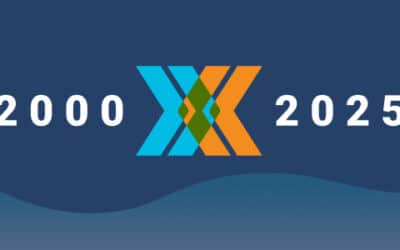Finding Stability Through System Performance
For school district facility managers, few challenges are more frustrating than unpredictable energy costs undermining carefully planned budgets. When utility bills can swing 20% month to month, even conservative budget estimates can quickly prove inadequate. With HVAC operations typically representing 40-50% of a district’s energy spend, these variations can have significant impacts on educational resources.
Understanding Budget Volatility
Understanding the root causes of energy cost volatility is essential for developing effective solutions that protect educational budgets.
Energy cost unpredictability stems from multiple sources that compound each other’s effects. Aging central plants typically see efficiency degradation of 3-5% annually, creating unexpected spikes in energy use that can reach 15-20% above baseline. This deterioration accelerates when deferred maintenance forces equipment to operate beyond recommended service intervals, leading to emergency repairs that cost 3-4 times more than planned maintenance while draining contingency funds. Seasonal demands add another layer of complexity, particularly during critical back-to-school periods when cooling demand can spike 40-50% above baseline as systems struggle to condition spaces during peak occupancy. Mid-season transitions between heating and cooling modes often result in simultaneous operation, driving energy waste up 20-30% during these critical periods. When these factors combine with rising energy rates, the result is a budgeting nightmare that can sometimes force difficult choices.
System Performance: The Key to Budget Protection
System performance optimization offers districts a proven path to budget stability that goes beyond simple cost reduction. By addressing the causes of energy volatility, optimized systems provide both immediate savings and long-term budget protection.
Traditional approaches to energy cost management often focus on quick fixes through equipment repairs or replacements. Equipment-specific solutions might temporarily reduce energy use, but they don’t address the system-wide inefficiencies that create unpredictable costs. True budget protection requires a comprehensive approach that optimizes how all system components work together.
This need for comprehensive optimization is particularly evident in central plants, where system performance varies widely based on weather, occupancy, and equipment condition. Without proper optimization, chillers operate at partial loads with poor efficiency, pumps run at unnecessary speeds, and cooling towers function sub-optimally. These inefficiencies create cost variations of 20-30% month to month, making budget planning nearly impossible. However, when these systems are optimized through intelligent staging, appropriate speed control, and coordinated operation of all components, energy consumption typically reduces by 25-35% while monthly cost variations shrink to 5-10%. This combination of efficiency and predictability creates the foundation for stable, protected budgets.
Creating Predictable Budgets
Creating truly predictable budgets starts with a thorough assessment of your district’s energy consumption patterns. Most schools find that HVAC systems, particularly central plants, account for 40-50% of total energy use, yet these systems often operate without proper performance monitoring or optimization. This gap between energy impact and system management creates significant budget vulnerability.
Understanding your energy profile requires examining both consumption patterns and system performance metrics. Critical data points include peak demand periods during the school day, base load patterns during unoccupied hours, seasonal variations in energy use, and most importantly, central plant performance indicators. These metrics reveal how system efficiency varies under different conditions, helping identify opportunities for both cost reduction and stability improvements.
Leveraging Chiller System Optimization for Budget Stability
Armed with a clear understanding of energy patterns, districts can implement targeted solutions that directly address their largest sources of budget volatility. Central plant optimization stands out as the most effective strategy, as it transforms the performance of systems representing 40-50% of total energy spend. This approach fundamentally changes how energy costs behave, replacing volatility with predictability.
Central plant optimization creates budget stability through coordinated system management. Rather than allowing components to operate independently, optimization integrates chillers, cooling towers, pumps, and controls through sophisticated algorithms that respond to changing conditions. This integration eliminates the inefficiencies that cause budget fluctuations:
- Chillers stage intelligently based on actual load requirements rather than cycling inefficiently
- Pumps automatically adjust speeds to match system demands instead of running at constant speeds
- Cooling towers modulate to provide optimal condenser water temperatures in all weather conditions
- Control systems continuously optimize the entire system rather than managing components individually
The result is consistent performance regardless of external variables. During peak cooling days, the system automatically adjusts to maintain efficiency without energy spikes. During partial loads, equipment operates at optimal settings rather than wasting energy. This consistency directly protects budgets by eliminating the 20-30% monthly cost variations typical of unoptimized systems.
Beyond immediate stabilization, optimization generates the data needed for accurate forecasting. Performance patterns become predictable, allowing district officers to project energy costs with confidence through budget planning, board presentation, and taxpayer review cycles. This predictability extends throughout the facility, as central plant data often reveals opportunities and issues elsewhere. For instance, abnormal distribution system temperatures might indicate air handler problems, while flow rate anomalies could signal developing maintenance needs. This comprehensive visibility transforms reactive budget management into proactive planning, allowing districts to allocate resources with greater confidence while protecting educational priorities.
Moving Forward
Budget predictability isn’t achieved through any single initiative but through a systematic approach to understanding and optimizing system performance. By focusing on the fundamental drivers of energy cost volatility, schools can redirect funds from reactive utility and maintenance spending to planned educational investments that directly support their educational mission.




